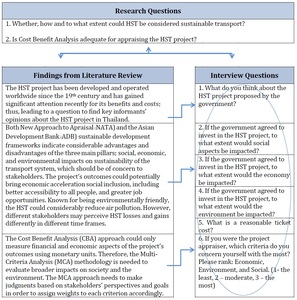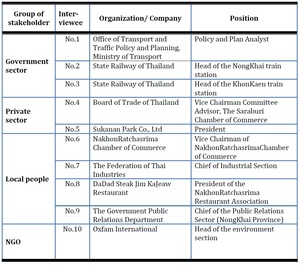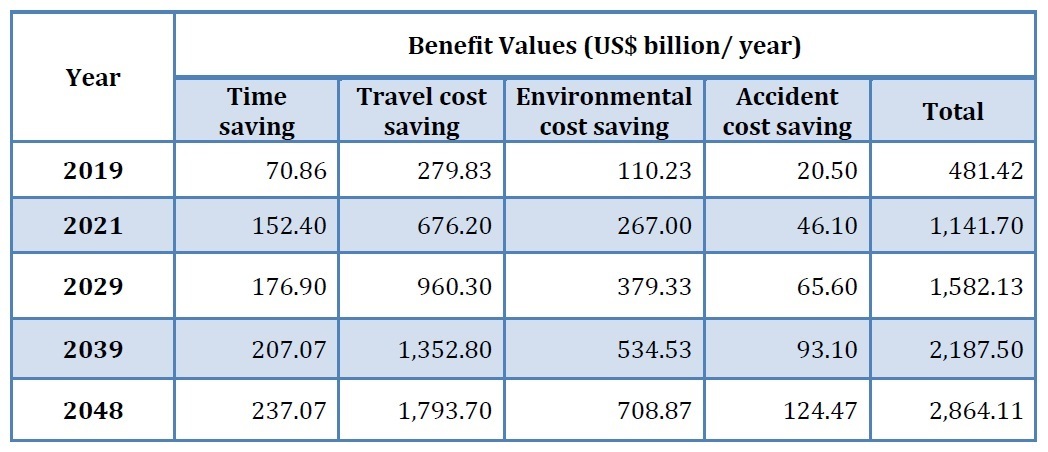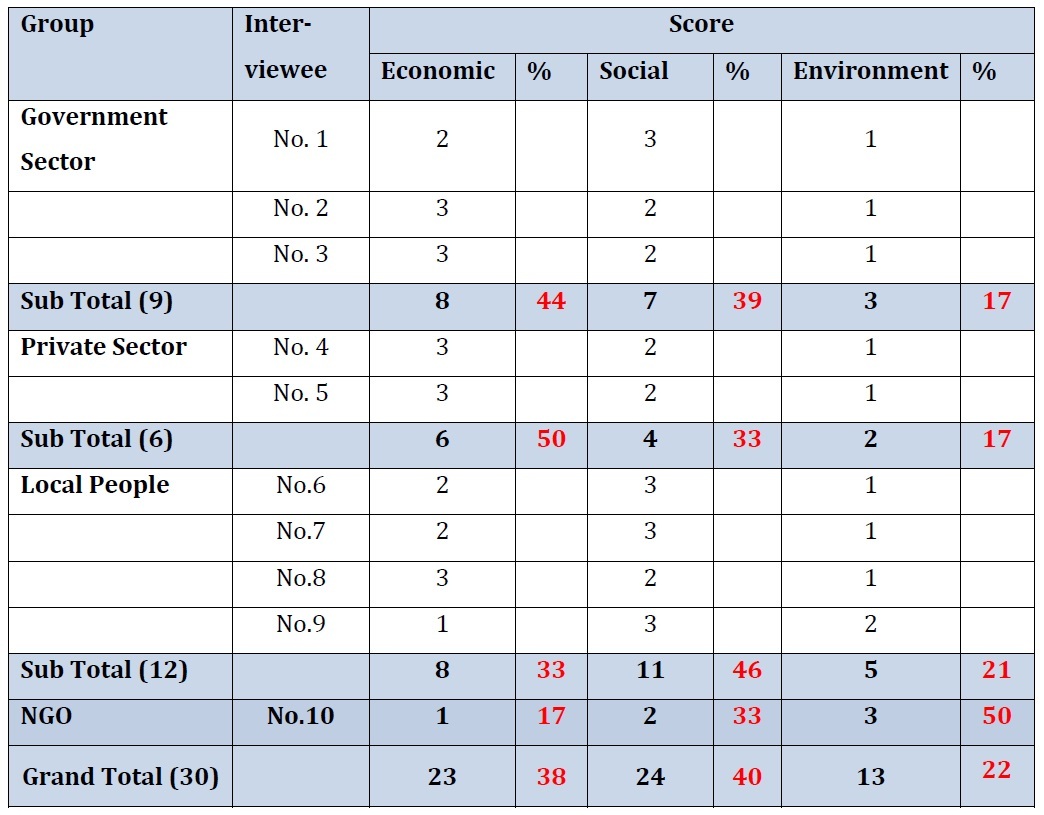Should Thailand have HSR?
A gift of a model railway from Queen Victoria was given to King Rama IV in 1855 stimulated an interest in rail transport in Thailand. However, the first railway line of 21.3 km, named the Paknam Railway, between Bangkok–Samut Prakan was first operated on April 11, 1893 under supervision of the State Railway of Thailand. Until 2005, different parts of Thailand were connected by 4,070 km (2,530 mi) of track, all of it meter gauge, nearly all single-track except in some important sections around Bangkok, which are double- or triple-tracked.
The need to improve the rail transportation system to alleviate the heavy traffic congestion with better quality trains is strongly recognized. The government under Prime Minister Yingluck Shinawatra proposed a high speed train project under the “Thailand 2020” scheme to boost Thailand’s economic growth, create jobs, and improve investor confidence. It is expected that upon the completion of the northeastern bound Bangkok – Nongkhai High Speed train, the quality of life of Thai people in close proximity to the rail installation and nearby provinces on-route should be improved.
The Yingluck government believed that this project would not only have a tremendous impact upon sustainable economic growth, transportation infrastructure provisions, and livelihoods of the locals but also connect neighboring ASEAN countries through the Lao People’s Democratic Republic. Prime Minister Yingluck said the Asian total rail integration, called the “Trans Asia Rail Network,” coincided with China’s policy, for a Yunnan-Singapore High speed rail project (Hays, 2012). Doubts were cast about whether HST could significantly increase Thailand’s geo/political significance as it is already located at the heart of mainland Southeast Asia. Thailand is at risk of turning the country into another “Pipelinistan” (Thaiintelligentnews, 2014). The project elicited widespread debate from people of all walks of life.
After seizing power from the elected government of Yingluck Shinawatra on May 22, 2014, the junta has criticized the former administration for corruption and mismanagement. In March 2014, a constitutional court struck down the previous government’s ambitious 2 trillion baht ($62 billion) infrastructure plan to build high-speed rail and other transport infrastructure as unconstitutional and said it would raise public debt to unacceptable levels. The court of Thailand decided not to continue this project. One judge (Yapparat, 2014) stated that the government has to fix all dirt roads instead of having the high-speed train project (Bangkok Pundit, 2014). Therefore, this project had bee n eliminated from the national infrastructure plan for the time being. However, public opinion about this project was sought from different groups of people.
Most projects previously undertaken in Thailand were appraised and evaluated in terms of financial and economic analysis only. The government sometimes separated environmental evaluation into another assessment framework (EIA). Despite these analyses, the government and the project’s sponsors main concern appears to have been about the project’s return on investment (ROI). This research finds out that not only is the ROI significant to the project, but the public’s concerns are also important for the government to take into consideration.
Objectives Supplementary
This study includes a literature survey and qualitative analysis leading to conclusions and findings with the following objectives:
-
To provide empirical evidence of the costs and benefits of the HST mode of transport to passengers and society from different stakeholder perspectives,
-
To provide the future policy recommendations on sustainable HST transportation
Methodology
This research relied mostly on a qualitative data collection technique to gather intensive data other than statistics and numbers. Ritchie and Lewis (2009) stated that the qualitative method could apply observational methods, in-depth interviewing, and the analysis of documentary evidence.
Research Instrument Design
Based on literature review, an interview guide was constructed for use in field interviews with key informants. Six key questions were formulated as shown in Table 1.
Key Informants and Data Collection
The interviews were taken in different locations along the route through which the HST BKK-NK line would have run. The researcher spent 4 days on July 1–4, 2014 collecting data. Ten key informants were carefully selected to represent different stakeholders as shown in Table 2.
Interviews, which were conducted in many provinces along the BNKHSR project corridor, lasted between 1-3 hours for each session. Each interview session was conducted in the Thai language. The descriptive analysis method (OMEGA Centre, 2012) was employed in analyzing the interview data, which was later used to formulate the final results of the research. Observations in research settings/locations were also performed to collect spatial and environmental data, which could be used in data triangulation. This research is subject to some limitations, methodologically and contextually.
Being a qualitative-based case study of a single route, results could not be generalized to the three other proposed routes, which differ in geographical, cultural, and ethnicity factors of the cities along the route. Time constraints prevent the verbatim transcription of the long recorded interviews into written transcripts; however the analysis frame was outlined to ensure thorough and essential data capturing. Although data triangulation was performed, there is a chance of human bias from the limited number of key informants. Had additional interviews been conducted, superior objective results could have been achieved in this study.
Infrastructure Development Concepts of the Government
As Thailand will join the ASEAN Economic Community (AEC) in 2015, it is expected that more investors and tourists, as well as trading activities, will pour into the country. Thailand could become a viable trading hub of the South East Asia region. Likewise, in response to pressures brought about from both population growth and an expansion of cities, the Thai government considered that the transportation infrastructure needed to be improved. The Thai government realized that an HST system could be an important sustainable transportation alternative to the existing system. The HST project in Thailand has been studied by the Office of Transport and Traffic Policy and Planning (OTP) since 2010. The OTP proposed four corridors with investment plans to be implemented over 18 years, between 2015 and 2032 (Chantruthai et al., 2014, p. 142). These four corridors need an investment of approximately US$26.11 billion (Wanwiset, 2013, p. 11).
According to the State Enterprise Policy Office (2013), all routes radiate from Bangkok (BKK) to the following destinations with an investment of approximately US$23.36 billion budget for 2,563 km on four lines.
-
The North: Chiang Mai, 745 km and project investment at US$6.54 billion,
-
The North East: NongKhai (NK), 615 km and project investment at US$5.64 billion,
-
The East: Rayong, 221 km and project investment at US$3.35 billion, and
-
The South: Padang Besar, 982 km and project investment at US$7.8 billion.
The six objectives of the HST project are to 1) improve and increase transport capacity, efficiency, reliability, and level of service, 2) facilitate business and city expansion, 3) reduce social exclusion, 4) decrease air pollution, reduce fossil fuel consumption, 5) increase labor market and 6) boost the economy (OTP, 2013). This research studied only one corridor, which is the route from Bangkok to NongKhai province because this route was agreed to in principal and a memorandum of understanding (MOU) was signed with the Chinese government (Smith, 2014), which wants to connect Asian countries together for social and economic purposes. This route was to be constructed in the first phase. The Thai government believes that the BKK - NK line has the potential to enhance economic growth since this line would be connected to China via Laos in the near future. This BKK – NK line will have the main HST train stations at Don Muang (DM), Ayutthaya (AY), Saraburi (SR), Pak Chong (PC), NakhonRatchasrima (NR), BuaYai (BY), KhonKaen (KK), UdonThani (UD), and NongKhai (NK), which are large cities in the North-Eastern region.
Results
Rate of Return (ROI) Concept towards Government Idea
A feasibility study of the HST project for the BKK – NK route seems to focus on monetary outcomes despite the significant social and environmental aspects included in the project’s objectives. The MMA Consultants et al. (2014) revealed that technical optimum, economic optimum, financial optimum, and project risk assessment and management were studied to determine the project’s viability. However, an environmental impact assessment (EIA) was also conducted, and its result was presented to the national environmental committee. Thus, it could be clearly seen that the government and consultant companies used CBA to appraise the project. Economic appraisal is a study and analysis of benefits and costs from a social viewpoint whereas a financial appraisal estimates the expected revenue of the project’s investment and the expected expenditure that the project is likely to incur.
The consultant companies analyzed potential economic direct benefits through savings of time cost, travel cost, environmental cost, and accident cost. The findings revealed a projection of benefits to be gained in different time frames ranging from US$481 billion in the commencing year to US$2,864 billion after 30 years of operation. The projections of benefit values of the proposed project are shown in Table 3.
Moreover, the consultants also analyzed the economic feasibility of the project which included Net Present Value (NPV), Benefit Cost Ratio (BCR) and Economic Internal Rate of Return (EIRR) as presented in Table 4.
Further indirect benefits could be derived from the economic agglomeration of the HST project’s identified benefits, leading to further economic activities (Banister & Berechman, 2000). Therefore, indirect benefits are likely to be transportation improvement, productivity as well as effective employment, or the so-called wider economic benefits (Graham, 2006). A review of the project’s appraisal indicates that the Thai government and the consultant companies presented only those outcomes that can be presented in monetary values.
The next section will present the interview results, which are focused on qualitative impacts as perceived by different stakeholders.
Public Opinion from In-Depth Interview
Data from the interviews was content analyzed and could be summarize d in six perspectives. Based on 10 key informant interviews, a number of opinions relating to the HST project in Thailand were conceptualized. There were both agreements and disagreements with the project proposal. The findings were summarized based on the following six questions.
1. What do you think about the HST project proposed by the government?
It was found that only 2 key informants, the chief of industrial section of the Federation of Thai Industries and the NGO representative disagreed with the project. These 2 people commented that it (HST) is not a necessity at the moment; however it will almost certainly be needed after the conventional rail system is improved. In their view, upgrading the existing single-track railway system to a dual-track system would be a better option as dual-track upgrading has proved effective on several other lines. Upgraded dual tracks could considerably increase train punctuality. Moreover, the HST project would need a huge investment and the country is not ready to spend that amount on this project. Moreover, NGO representative stated, “I would need to see transparency in the project’s management and the spending of public money, which have been problems in almost every other national project.”
However, those who are in favor of the HST project believe it could bring overall benefits to their provinces and the country at large. For example, the head of the Khon Kaen train station mentioned, “This project could totally bring benefits to people, either travelers or local people, because it saves time for travelers and brings more trade to local people along the route.” On the other hand, the chief of the industrial section revealed, “These benefits will be significantly increased if the proposed project could connect to the neighboring country, Laos, and then to China. International trading and traveling would increase and the vision of Thailand as a regional land transportation hub would also be realized.”
2. If the government agreed to invest in the HST project, to what extent would the social aspects be impacted?
All informants stated that the HST could bring greater benefits regarding social aspects in terms of increasing quality of life. “It could help passengers in terms of time saving and reduce road accidents,” mentioned the head of the Khon Kaen train station. These benefits were identified because the HST could run safely at speeds of 250 kph. Additionally, the policy and plan analyst mentioned, “People could have better access to services such as education and health care.” However, local residents were apprehensive about the possibility of high ticket fares that might be an obstacle for many people, especially those on lower incomes. Thus, ticket fare is far more concerning to president of the Nakhon Ratchasrima restaurant association. The project could bring indirect benefits to local people through increasing job opportunities in cities along the corridor as well as decreasing overpopulation in Bangkok. Thus, cities along the corridor could become bigger and more urbanized. As a result, this could reduce social exclusion in society. On the other hand, the vice chairman committee advisor of the Saraburi Chamber of Commerce claimed “any reduction in the social gap depended on the ticket fare.” If the fare is too expensive for the majority of local people, this project could not be considered as a mechanism to reduce social disparity. The head of the NongKhai train station and the Vice Chairman of Nakhon Ratchasrima Chamber of Commerce also voiced their concerns about the land use and spatial planning of the proposed HST stations, as there was no clear indication of the exact locations of the HST stations along the corridor. People were worried about the expropriation of their land. From public consultation reports, it was found that a group of local people and business owners in Saraburi province really wanted to have the HST station in the same area as the existing conventional train station. They did not want to move their businesses to the new area that was proposed in the initial plan. Likewise, they had the idea that the city should have only one business and trading area, which is a traditional thought of the older generation.
3. If the government agreed to invest in the HST project, to what extent would the economy be impacted?
No one doubted that the HST could boost both local and national economic growth in Thailand. However, half of the interviewees, the policy and plan analyst, the head of the KhonKaen train station, the vice chairman committee advisor of the Saraburi Chamber of Commerce, the chief of the industrial section, and the chief of the public relations sector (NongKhai Province) suggested that “this project should be expanded to Vientiane, capital of Lao People’s Democratic Republic and later to China. If this project ope rates only in Thailand, it would not cover all its expenditures.” But if it could connect to Laos and China, Thailand would reap greater benefits through increased passenger numbers and trade logistics from China. Nevertheless, the chief of the industrial section suggested that the trade logistics would be suitable for small and luxury products traders such as electronic spare parts and technological parts only, not for grocery or daily products traders because the fare would be unaffordable for primary producers. It is envisaged that while the HST stations are being constructed, investors would be encouraged to invest in the area. Therefore, commercial activities in local areas would likely be enhanced. Restaurants, accommodation, and tourist businesses would gain from the HST because people could easily use the HST on their vacation. Nonetheless, the chief of the public relations sector (NongKhai Province) was concerned that the stations may be located far from the cities or tourist attractions, which would require connection facilities between downtown or business centers and the HST stations. This would necessitate the government negotiating a complex model shift into the local development plan.
4. If the government agreed to invest in the HST project, to what extent would the environment be impacted?
It is widely agreed that the HST is more environmentally friendly than other modes of transportation and all interviewees also perceived that the HST has the potential to reduce air pollution and fuel consumption. As the HST is operated by electricity, the government could take this opportunity to decrease the cost of imported fuel. However, the vice chairman committee advisor of the Saraburi Chamber of Commerce was concerned about the sufficiency of electricity to run the HST. Thus, the government might consider using nuclear power to generate electricity in the future. Yet nuclear power has both advantages and disadvantages. In addition, head of the environment section of an NGO had taken this environmental aspect into serious consideration. He mentioned “the HST project would damage forests and green space along the corridor as well as creating noise and vibration pollution from the HST’s operation.”
5. What is a reasonable ticket cost?
All key informants agreed that the HST fare should be in between the cost of a bus ticket and airline ticket and should not exceed the cost of petrol to run a private car from BKK to any destination along the HST BKK – NK line. If the HST ticket price was between the cost of a bus ticket and an airline ticket it would be considered affordable by local people, although it is still quite high for daily use, especially among lower income populations. Therefore, the HST project should have different classes on the same train, for example first class, second class, and third class.
To give a concrete picture of a reasonable HST fare, all interviewees suggested that the ticket price from Bangkok to Saraburi (about 100 km) should be between US$5 and US$8; from Bangkok to NakhonRatchasrima (about 270 km) should be between US$14 and US$19; from Bangkok to KhonKaen (about 500 km) should be between US$20 and US$23; and from Bangkok to NongKhai (about 650 km) should be between US$28 and US$35.
A comparison of the affordable HST fares suggested by the key informants and the estimated fares suggested by the HST proposal (OTP 2014) (refer to Table 5) revealed a similar structure.
Therefore, it could be concluded that the proposed fare schedule is reasonable and affordable for local people.
6. If you were the project appraiser, which criteria would you concern yourself with the most? Please give your subjective evaluation of economic, environmental, and social impacts.
The results in Table 6 reveal that the key informants overall concern is for the social (40%), economic (38%) and environmental (22%) impacts respectively. However, comparing the findings by groups of key informants revealed that economic impact is the biggest concern for the government sector and private sector, social impact is the greatest concern for local people, and environmental impact is the highest concern of the NGOs which is usually the case as the key informant was the head of an environmental division.
Discussion and Suggestions
Generally speaking, the BNKHSR project could be recognized as a sustainable transportation alternative. The HST project is well accepted among scholars and key stakeholders as an agent of change and would work best if positioned in a long-term policy toward economic, social, and environmental development. Boosting economic growth and improving environmental conditions is complicated and time consuming. Although some concerns about routing allocation were voiced, key informants agree and believe without reservation that the HST could bring great advantages to the country. The project value and its economic potential could be increased dramatically if this BNKHSR line could be extended into Southern China through Laos. It has been demonstrated that the transfer of goods and passengers to and from China via Laos could lead to an economic boom in the region.
It should be noted that the results revealed different evaluations on environmental impact to reduce air pollution. However, this factor received the lowest concern rating for most key informants, except the NGO stakeholder. Scant consideration was given to other environmental issues, which contribute to sustainability of the project such as soil condition, noise, and reducing green spaces. Modal shift to replace a mode of transport with another to make the first less congestion is the likely cause. Disparity on this environmental factor needs further evaluation.
The HST project will inevitably have a social impact on the local communities along the route and overall this factor received the highest concern among key informants. Thus special attention to definitive spatial planning should be a top priority. To get the best appropriate alternative, the planners should take into consideration the needs of all stakeholders and local authorities and balance them with the government’s criteria. Attention to the significant concerns regarding expropriation of land for new stations, increasing job opportunities, reducing social seclusion, reducing road accidents and traffic jams, and improving the quality of life, etc. must be considered a priority. However this could require substantial trade-offs for different groups of stakeholders. Reduced air pollution may not be considered an advantage if some stakeholders have to endure noise and vibration from the track. Nonetheless, a good quality of life is highly dependent upon fare prices, which are dependent upon how the system will be operated and may require a government subsidy.
Biographical Note
Nattawadee Boonwattanopas is a Ph.D. candidate in information science at Sukhothai Thammathirat Open University, Thailand. She holds an MSc in mega infrastructure planning, appraisal and delivery from University College London in the UK and M.Intnl.Bus from the University of South Australia. She was a project manager of research projects funded by the prime minister’s office and the Ministry of Culture in Thailand.
She can be reached at the School of Liberal Arts, Sukhothai Thammathirat Open University, Chaengwattana Rd., Bangpood, Pakkret, Nonthaburi 11120 Thailand or by email at nboonwattanopas@gmail.com.
Correspondence
All correspondence concerning this article should be addressed to Nattawadee Boonwattanopas at the School of Liberal Arts, Sukhothai Thammathirat Open University, Chaengwattana Rd., Bangpood, Pakkret, Nonthaburi 11120 Thailand or by email at nboonwattanopas@gmail.com.






.jpg)






.jpg)
